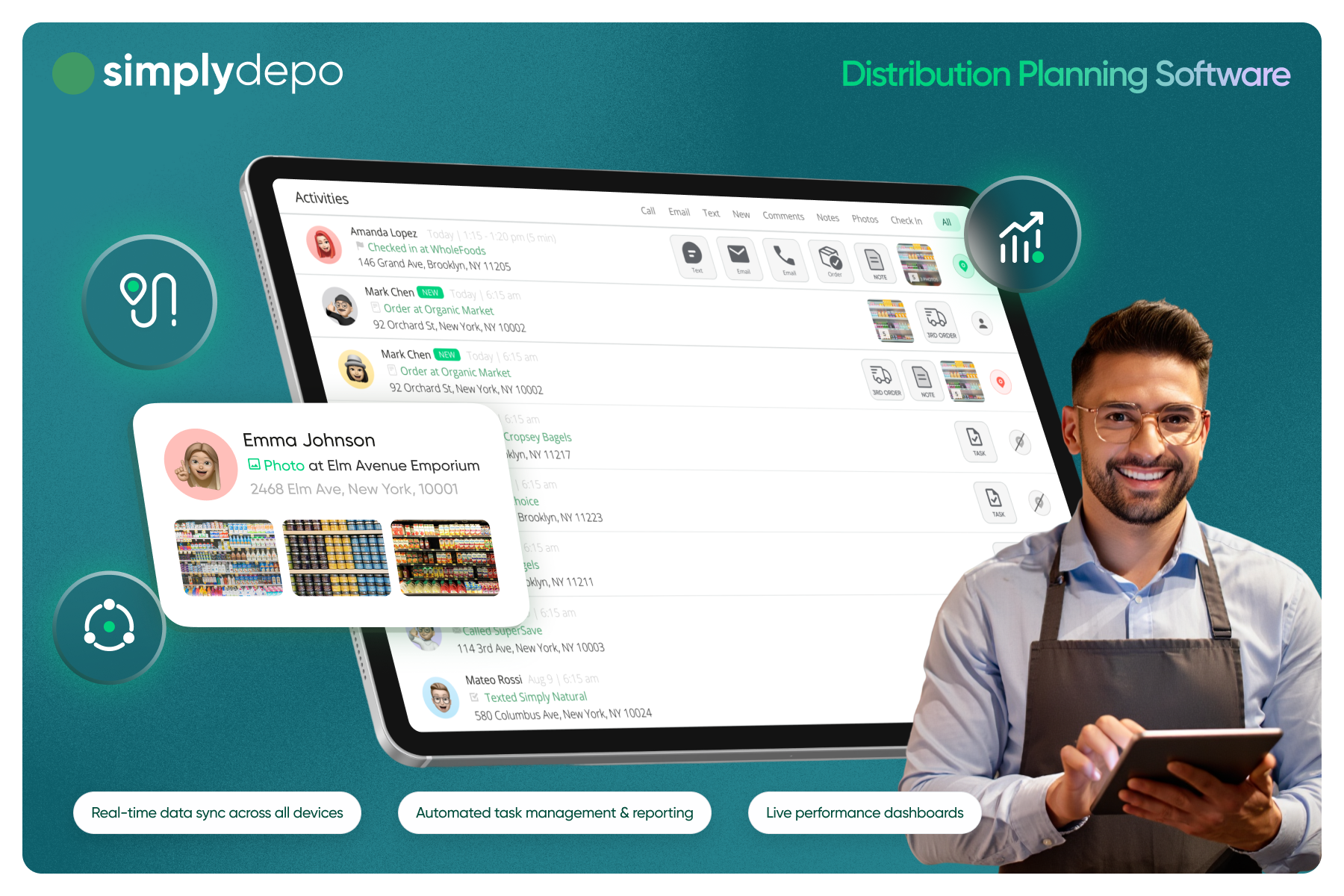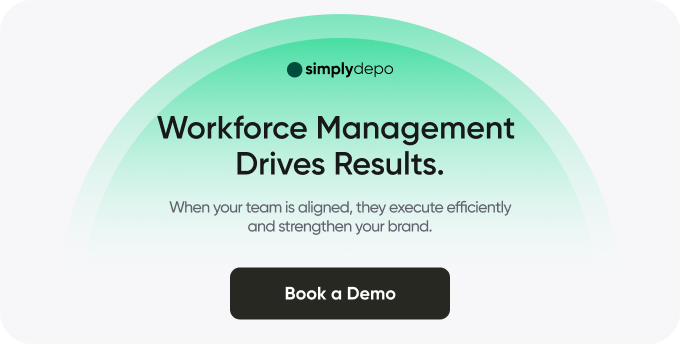“Good enough” planning burns cash in 2025. Winners run distribution planning software – tight network planning, distribution resource planning, agile replenishment, and route optimization that hits OTIF without extra miles. Spreadsheets can’t handle volatility or compliance. You need an integrated stack powered by AI, IoT, and decision intelligence to put the right product in the right place at the right time – while meeting necessary regulations. This guide covers what matters: distribution planning’s role in supply chain management, tech trends, a head-to-head distribution planning software comparison, implementation best practices, and real-world distribution resource planning use cases with clear ROI. Let’s turn planning from a fire drill into a growth engine.
What Is Distribution Planning in Supply Chain Management?
Distribution planning in supply chain management refers to the process of determining how goods are moved, stored, and replenished across the network — from manufacturer to distributor to retailer or end-customer.
Distribution Network Planning
Network planning sets the physical structure of your supply chain. It answers:
- How many distribution centers (DCs) do we need?
- Where should they be located?
- Which customer zones do they serve?
By analyzing cost-to-serve, transit times, and regional demand variability, network optimization tools can save 5-15% in logistics costs, according to Deloitte’s 2024 U.S. Supply Chain Report.
💡 Pro Tip
Before investing in a full-scale platform, run scenario modeling using 3-5 network configurations. Even a basic spatial model in Power BI or Tableau can uncover hidden inefficiencies that guide your software’s configuration phase
Distribution Resource Planning & Replenishment
Distribution resource planning software automates when and how inventory should be replenished across each location.
It relies on parameters such as:
- Demand forecasts
- Lead times
- Safety stock policies
- Service level targets
- Multi-echelon inventory rules
An effective distribution resource planning engine ensures balance: enough stock to avoid shortages, but not so much that it drives up carrying costs.
Distribution Route Planning & Optimization
Once replenishment plans are finalized, route management software determines the most efficient delivery paths. Advanced systems use AI-based vehicle routing algorithms (VRP) to minimize travel time, fuel use, and carbon emissions — while accounting for driver schedules, load capacity, and real-time traffic data.
💡 Pro Tip
Prioritize platforms that integrate AI with telematics to enable dynamic re-routing. According to Logistics Management (2024), this combination cuts average route miles by 15-20% compared to static route logic.
Distribution Capacity & Constraint Planning
True optimization goes beyond route paths. Distribution capacity planning software models operational constraints — driver shifts, vehicle types, warehouse dock times, and equipment limits — ensuring feasible, not just theoretical, plans.
Continuous Feedback Loops
Distribution planning is cyclical. Execution data from telematics, IoT sensors, or ERP systems feeds back into the DRP model to fine-tune forecasts and improve future accuracy.
Technology Trends Powering Distribution Planning
Technology is reshaping how distributors plan, execute, and optimize supply chain operations.
AI & Decision Intelligence
AI enhances distribution planning by detecting demand anomalies, recommending stocking strategies, and generating optimal replenishment schedules.
Gartner’s 2025 Supply Chain Outlook reports that 65% of planning systems now embed machine learning to improve forecast accuracy.
IoT & Telematics
IoT sensors installed on trucks and in warehouses enable real-time visibility into goods movement, temperature, and humidity — critical for perishable or regulated goods.
Telematics data integrates directly into planning engines for route re-optimization in real time.
Advanced Constraint Workflow Frameworks (ACWF)
An emerging trend among top SaaS platforms, ACWFs coordinate multiple modules — replenishment, routing, and capacity — under a unified optimization layer.
💡 Pro Tip
Choose vendors with modular orchestration layers. They allow you to start with simple distribution planning or routing automation and scale up to full decision-intelligence planning without re-platforming.
Distribution Planning Software Features & Pricing Comparison
The distribution technology market is packed with solutions built for different needs — from full ERP suites to mobile route planning platforms. Below is a detailed breakdown of the top distribution planning software in 2025, including focus, pricing, G2 ratings, and real-world pros and cons for distributors looking to modernize operations and boost efficiency.
1) SimplyDepo
Focus & Key Features:
A unified distribution planning platform built for CPG brands, wholesalers, and field sales teams. Combines AI-powered demand forecasting, real-time inventory visibility, order management, route optimization, and a mobile sales app. Integrates seamlessly with QuickBooks, Stripe, Zebra scanners, and leading ERPs.
Pricing & G2 Rating:
💲 | G2 4.7 ★
Pros:
• Modern, intuitive UI
• Fastest setup and onboarding
• Strong field sales and merchandising capability
• Offline access for field reps
• AI-driven analytics and narrative summaries
• Seamless integrations
• Transparent pricing with no hidden fees
Cons:
• Newer entrant with fewer legacy modules
• Advanced features may require consultation
2) NetSuite
Focus & Key Features:
Comprehensive cloud ERP that unifies finance, inventory, CRM, e-commerce, and order management under one system. Offers strong global capabilities and extensive customization options.
Pricing & G2 Rating:
💲💲💲 | G2 4.1 ★
Pros:
• Enterprise-grade ERP for finance-heavy operations
• Advanced customization and scalability
• Global compliance and reporting
Cons:
• High cost and complex setup
• Long implementation timelines
• Requires experienced administrators
3) Acumatica
Focus & Key Features:
Cloud-based ERP for small and mid-size distributors, offering inventory, purchasing, and financial management. Ideal for growing multi-location companies.
Pricing & G2 Rating:
💲💲 | G2 4.5 ★
Pros:
• Flexible licensing
• Built-in CRM and accounting integration
• Multi-location support
Cons:
• Requires VAR support for customization
• Limited AI capabilities
• Lacks advanced mobile field tools
4) Pepperi
Focus & Key Features:
An omnichannel B2B platform that combines e-commerce & field sales in one system. Integrates with ERP and CRM solutions for end-to-end order visibility.
Pricing & G2 Rating:
💲💲 | G2 4.4 ★
Pros:
• Unified platform for orders
• Excellent catalog
Cons:
• Setup can be complex
• Tiered pricing for modules
• Some advanced features require technical support
5) Orders in Seconds (OIS)
Focus & Key Features:
Cloud-based order management and mobile sales solution for wholesalers. Includes barcode scanning, route tracking, and payment capture.
Pricing & G2 Rating:
💲 | G2 Not Rated
Pros:
• Budget-friendly
• Offline mobile functionality
• User-friendly interface
Cons:
• Limited analytics and planning tools
• Fewer integrations
• Less modern design
6) B2B Wave
Focus & Key Features:
Self-service B2B e-commerce portal where wholesale buyers can place orders, check stock, and review order history. Integrates easily with ERP systems.
Pricing & G2 Rating:
💲💲 | G2 4.8 ★
Pros:
• Quick deployment and easy setup
• Customizable buyer portals
• Great self-service experience
Cons:
• E-commerce focus only
• Lacks route planning and CRM features
• Minimal analytics
7) Skynamo
Focus & Key Features:
Mobile-first sales app offering route planning, GPS tracking, CRM, and customer insights. Built for field sales and order management teams.
Pricing & G2 Rating:
💲💲 | G2 4.5 ★
Pros:
• Excellent mobile experience
• Offline access for field reps
• Boosts rep productivity
Cons:
• Minimal warehouse/inventory tools
• Integration requires connectors
• Pricing can rise for large teams
8) Zoey
Focus & Key Features:
B2B e-commerce and quoting platform supporting custom pricing, multi-currency support, and ERP integration.
Pricing & G2 Rating:
💲💲 | G2 4.3 ★
Pros:
• Strong quoting and pricing management
• Flexible storefront customization
• Multi-currency and localization support
Cons:
• Primarily e-commerce focused
• Complex configuration
• Often requires developer support
Which Platform Is Best for You?
Choosing the right solution depends on your size, goals, and operational priorities:
-
Small to Mid-Sized Distributors:
SimplyDepo is the top choice for growing CPG and wholesale distributors who need speed, simplicity, and AI-driven insights — without the complexity or cost of a full ERP. -
Enterprise & Global Operations:
NetSuite and Acumatica deliver strong enterprise control and scalability but require greater investment and IT resources. -
Field Sales & Route Management:
SimplyDepo and Skynamo excel for mobile-first field operations, offering real-time visibility and offline capabilities. -
E-Commerce & Self-Service:
B2B Wave, Pepperi, and Zoey shine for distributors emphasizing digital storefronts and buyer portals. -
Budget-Friendly Option:
Orders in Seconds (OIS) offers solid core functionality at an affordable price, best suited for small teams.
Pros and cons summary
- SimplyDepo: Combines demand planning, order management, inventory optimization, route management and mobile sales in one platform. The intuitive UI and AI‑driven insights help distributors achieve faster ROI. Transparent pricing and strong integrations set it apart.
- Pepperi: Ideal for midsize to large distributors requiring an omnichannel solution and retail execution. However, complexity and modular pricing make it costly for lean teams.
- Orders in Seconds: A budget‑friendly option for small distributors needing simple order capture. Lack of advanced planning and analytics limits strategic use.
- B2B Wave: Great for wholesalers seeking a quick‑to‑deploy online ordering portal. Not suited for field reps or integrated logistics planning.
- Skynamo: Strong mobile capabilities and route planning, best for field‑centric sales teams. Needs add‑ons for inventory and back‑office functions.
- Zoey: Flexible e‑commerce with complex quoting; good for manufacturers/distributors with intricate pricing structures. Implementation can be resource‑intensive.
- NetSuite (Oracle): Deep financial integration, scalability, extensive customization. High implementation costs, long deployment cycles, complex user interface for non-technical teams.
- Acumatica: Flexible modules, open API architecture, good balance of ERP depth and cloud simplicity. Requires customization for advanced route optimization or AI-driven DRP.
Essential Features of Distribution Planning Software
When evaluating distribution planning solutions, look for the following capabilities. These features reflect supply‑chain best practices, regulatory requirements and technology trends discussed above.
- Demand forecasting & AI analytics – Statistical forecasting, machine‑learning models and generative AI to generate demand narratives and summarise customer signals. Support for scenario planning and simulation helps planners model promotions, seasonality and economic shifts.
- Inventory optimization & replenishment – Real‑time inventory visibility across warehouses, trucks and retail locations. Set dynamic safety stock levels, reorder points and min‑max thresholds. Track lot/batch numbers and expiration dates to comply with DSCSA and 21 CFR Part 205
- Order management – Centralize order capture from field reps, e‑commerce portals and EDI. Support customer‑specific pricing, promotions, discounts and multi‑currency transactions.
- Route and delivery planning – Optimize route schedules based on real‑time traffic, distance and delivery windows. Integrate with GPS and telematics to provide live ETAs.
- Warehouse & logistics coordination – Manage picking, packing, put‑away, cross‑docking and returns. Integrate with robotics, automated storage and retrieval systems (AS/RS) and IoT sensors for ambient intelligence.
- Mobile field sales app – Provide offline order entry, inventory checks, customer notes, GPS route planning and digital signature capture. A multimodal UI improves adoption.
- Analytics dashboards & decision intelligence – Visualize KPIs such as fill rate, inventory turnover, order cycle time, customer margins and service levels. Support for what‑if analyses and AI‑driven recommendations.
- Integration & extensibility – Connect with ERP systems (QuickBooks, Netsuite), accounting (Xero), payment processors (Stripe), barcode scanners (Zebra), e‑commerce platforms and DSCSA compliance networks.
- User experience & onboarding – Intuitive, modern UI with guided workflows. Choose solutions which provide training resources, ACWF features and knowledge bases.
- Scalability & deployment options – Cloud‑native architecture with API and microservice support. Support multi‑tenant SaaS, on‑premises or hybrid deployment to meet compliance or latency requirements.
Distribution Planning Software Implementation Best Practices
Even the best software can fail if not implemented properly.
Follow these proven strategies for a successful rollout:
Data Readiness
- Audit and clean master data for SKUs, customers, and lead times.
- Validate addresses with geocoding tools to ensure accurate route modeling.
- Synchronize data structures across ERP, WMS, and CRM.
Integration Planning
Use middleware or APIs to connect ERP, WMS, and TMS systems.
Avoid point-to-point connections that complicate maintenance.
Integration sequence recommendation:
- ERP integration for demand/supply data
- WMS integration for stock levels
- TMS or routing integration for dispatch logic
- EDI or IoT integration for real-time tracking
Migration & Testing
- Start with a snapshot migration of open orders and inventory.
- Conduct parallel runs for at least one full replenishment cycle.
Validate KPI deltas: stockouts, route efficiency, delivery lead time.
Change Management & Training
Successful adoption depends on user engagement:
- Train by role (warehouse, route planner, dispatcher, sales).
- Build a sandbox environment for safe practice.
- Highlight time savings and reduced errors as key benefits.
Phased Rollout
Instead of a “big bang,” deploy by region or product category. Monitor key KPIs: on-time delivery, mileage, service level adherence.
Distribution Resource Planning Examples & Success Stories
The following distribution planning examples highlight how U.S. distributors — including SimplyDepo clients — are transforming operations with AI-driven replenishment, routing, and compliance automation.
| Use Case | Business Context | Outcome |
| Multi-Warehouse DRP Optimization | A regional distributor operating three DCs serving 150+ retailers across two states. | Inventory reduced by 8% while maintaining a 98.5% service level using automated DRP and replenishment rules. |
| Route Density Optimization | 60 daily routes with mixed order sizes across grocery and convenience channels. | Reduced route miles by 12% and improved delivery times by 18% through AI-based route clustering and driver scheduling. |
| Peak Season Capacity Planning | Beverage distributor scaling deliveries by 35% during summer promotion campaigns. | Increased on-time delivery by 10% and reduced overflow costs via predictive resource allocation and capacity logic. |
| Fresh Food FIFO Optimization | A regional produce distributor managing 2,000+ perishable SKUs. | Reduced spoilage by 9%, improved shelf-life tracking, and boosted product freshness index using SimplyDepo’s route sequencing with FIFO logic. |
| **SimplyDepo Case Study #1 – Brooklyn Beverages | Brooklyn Beverages, a New York-based craft beverage distributor with 4 warehouses and 3,000 SKUs, adopted SimplyDepo’s AI-based distribution resource planning software to unify forecasting and route execution. | Within 60 days, achieved 22% faster order processing, 15% lower inventory holding costs, and full QuickBooks integration for real-time stock synchronization. |
| **SimplyDepo Case Study #2 – Snacks Distributor | WestCoast Snacks, a California snack & convenience food distributor, replaced manual scheduling with SimplyDepo’s route optimization module and integrated telematics tracking. | Reduced route mileage by 14%, driver overtime by 11%, and reached ROI within 4 months. Onboarding time: under 2 weeks for 40+ reps. |
💡 Pro Tip
SimplyDepo customers report higher system adoption rates because of the platform’s intuitive mobile UX, QuickBooks and Stripe integrations, and rapid onboarding (under 2 weeks) — proving SimplyDepo’s usability edge over legacy ERP systems.
Book a Demo
How to Choose the Right Platform (10-Step Checklist)
- Define business outcomes first
Align on 3-5 measurable goals (e.g., -10% miles, +2 pts fill rate, -15% carrying costs, +5% on-time delivery). - Map your planning scope
Decide what you truly need in phase 1: DRP, multi-echelon, route optimization, capacity, traceability, what-if simulation. - Audit data readiness
Validate SKU masters, customer addresses (geocodes), lead times, demand history. Flag gaps you’ll fix pre-implementation. - Shortlist vendors by fit
Score tools against must-haves: DRP depth, VRP quality, constraints, compliance, integrations (ERP/WMS/TMS/EDI), usability, analytics. - Request a targeted POC
Use your data for 2-3 hardest routes/SKUs/DCs. Require baseline vs. uplift on KPIs and a written configuration guide. - Evaluate TCO, not list price
Include licenses, integrations, data cleanup, training, change management, and ongoing admin. Push for transparent pricing. - Check integrations early
Verify certified connectors for QuickBooks/NetSuite, major WMS/TMS, EDI, telematics, Zebra devices, Stripe, etc. - Assess security & compliance
Ask for audit trails, role-based access, encryption, retention policies, and DSCSA/21 CFR capabilities (if applicable). - Talk to references like you
Same industry, order profile, fleet size, regulatory profile. Ask about time to value and real adoption, not just features.
Next Steps: Explore SimplyDepo Resources for Smarter Distribution
If you’re looking to go beyond the operational details of distribution planning and gain a strategic, high-level view of modern distribution management, we recommend visiting SimplyDepo’s in-depth Distribution Management Software Guide.
It breaks down how leading distributors are using AI-driven planning, sales automation, and data integration to build more resilient, scalable supply chains.
To see how SimplyDepo works in real-world environments — including replenishment automation, route optimization, and mobile field execution — explore SimplyDepo solution for Distribution.
Distribution Planning Software FAQs
What is distribution planning software and why is it important?
Distribution planning software helps companies forecast demand, manage inventory, and plan delivery routes with better accuracy. It replaces manual spreadsheets with one connected system that improves on-time delivery, lowers transportation costs, and keeps the right products in stock across all locations.
How does SimplyDepo improve distribution planning for CPG and wholesale companies?
SimplyDepo combines forecasting, inventory tracking, order management, and route optimization in one platform. Its easy-to-use tools help distributors plan smarter, deliver faster, and reduce waste while integrating directly with QuickBooks, Stripe, and other systems.
What features should distributors look for in distribution planning software?
Key features include accurate demand forecasting, real-time inventory visibility, automated replenishment, route optimization, and analytics. A strong platform should also connect easily with existing ERP or accounting systems. SimplyDepo provides all of these in one unified solution.
How can distribution planning software lower logistics and delivery costs?
By automating replenishment, improving routing, and managing capacity, distribution planning software helps companies cut unnecessary miles and fuel use. SimplyDepo uses AI and live traffic data to make deliveries more efficient and reduce operating expenses.
Is SimplyDepo a good fit for small and mid-sized distributors?
Yes. SimplyDepo was built for growing distributors that want advanced planning tools without the heavy cost or complexity of large ERP systems. It offers fast onboarding, a clean interface, and flexible pricing that scales as your business expands.
How long does it take to implement a distribution planning system?
The timeline depends on company size and data readiness, but SimplyDepo users typically go live within 4 to 8 weeks. Its guided onboarding and built-in integrations make setup simple and help teams start seeing results quickly.
Can SimplyDepo connect with existing accounting or ERP tools?
Yes. SimplyDepo integrates securely with QuickBooks and other ERP and payment systems. This ensures all order, payment, and inventory data stays synchronized, saving time and reducing manual errors across the entire operation.
Boost Sales.
Cut Manual Work.
Streamline ordering, routing, and retail execution — while giving every rep the tools to grow accounts faster.
-
+15h
Save weekly
per rep -
93%
Increase
buyer retention -
24%
Increase
in retail sales

Error: Contact form not found.












